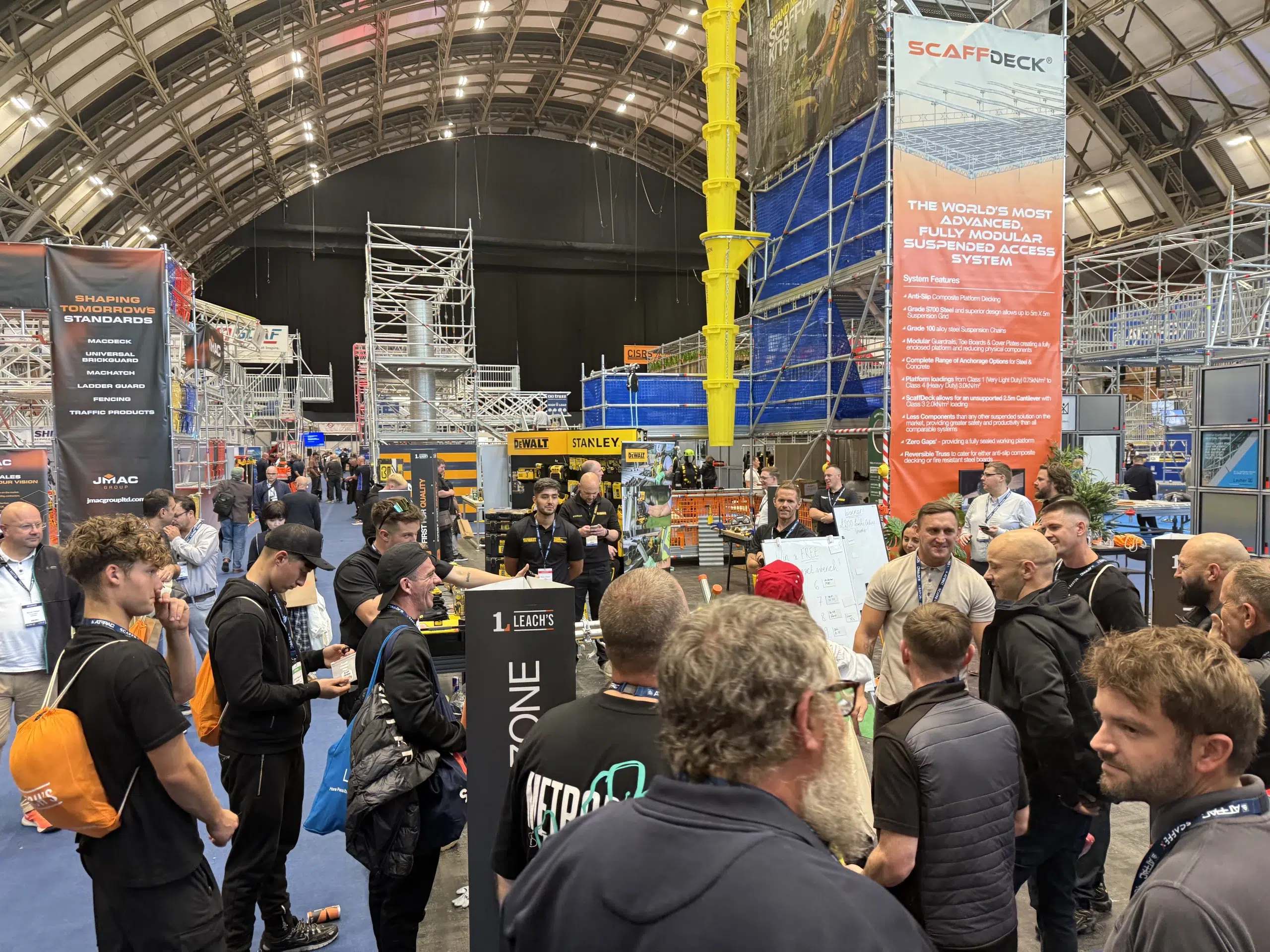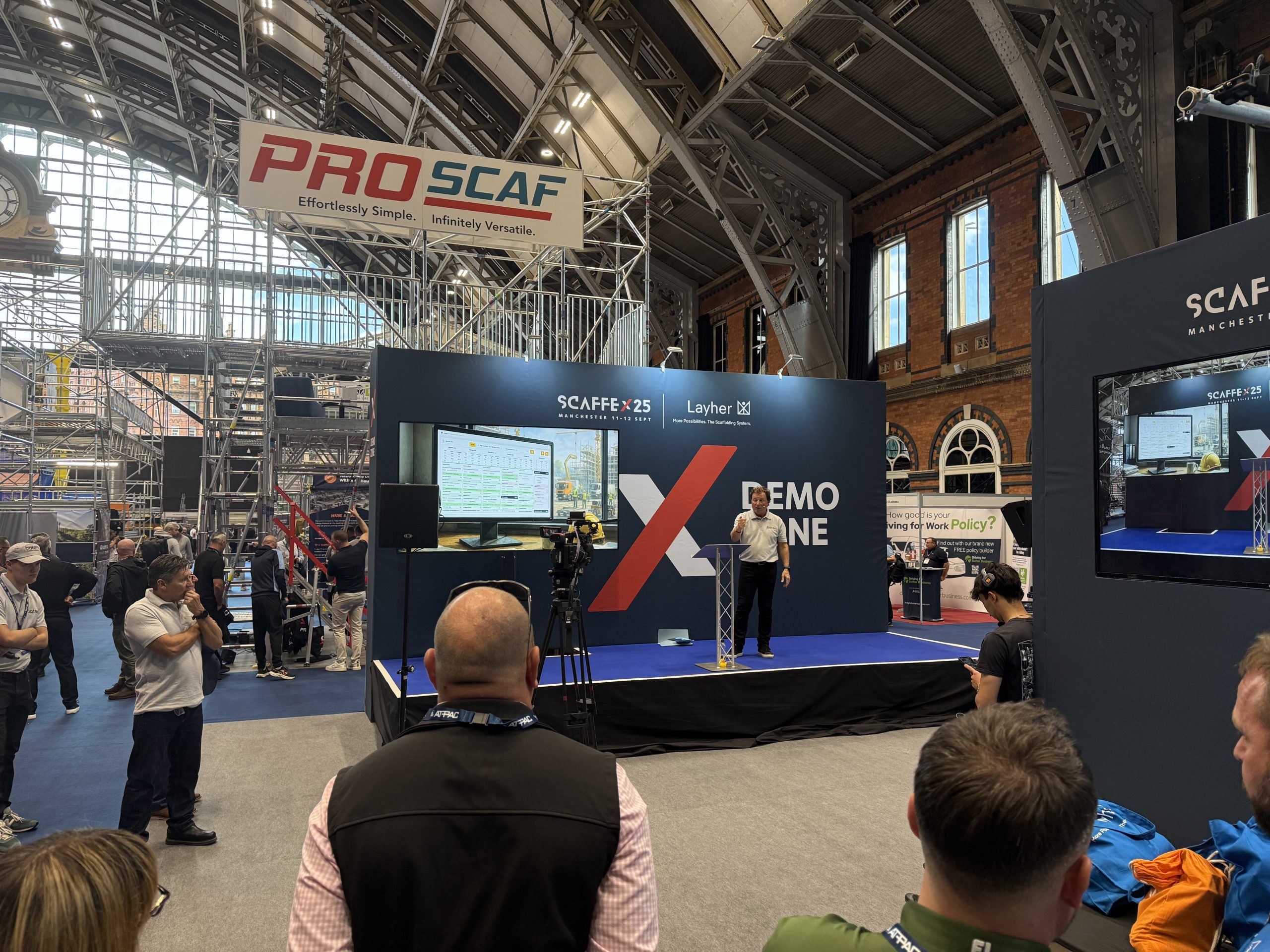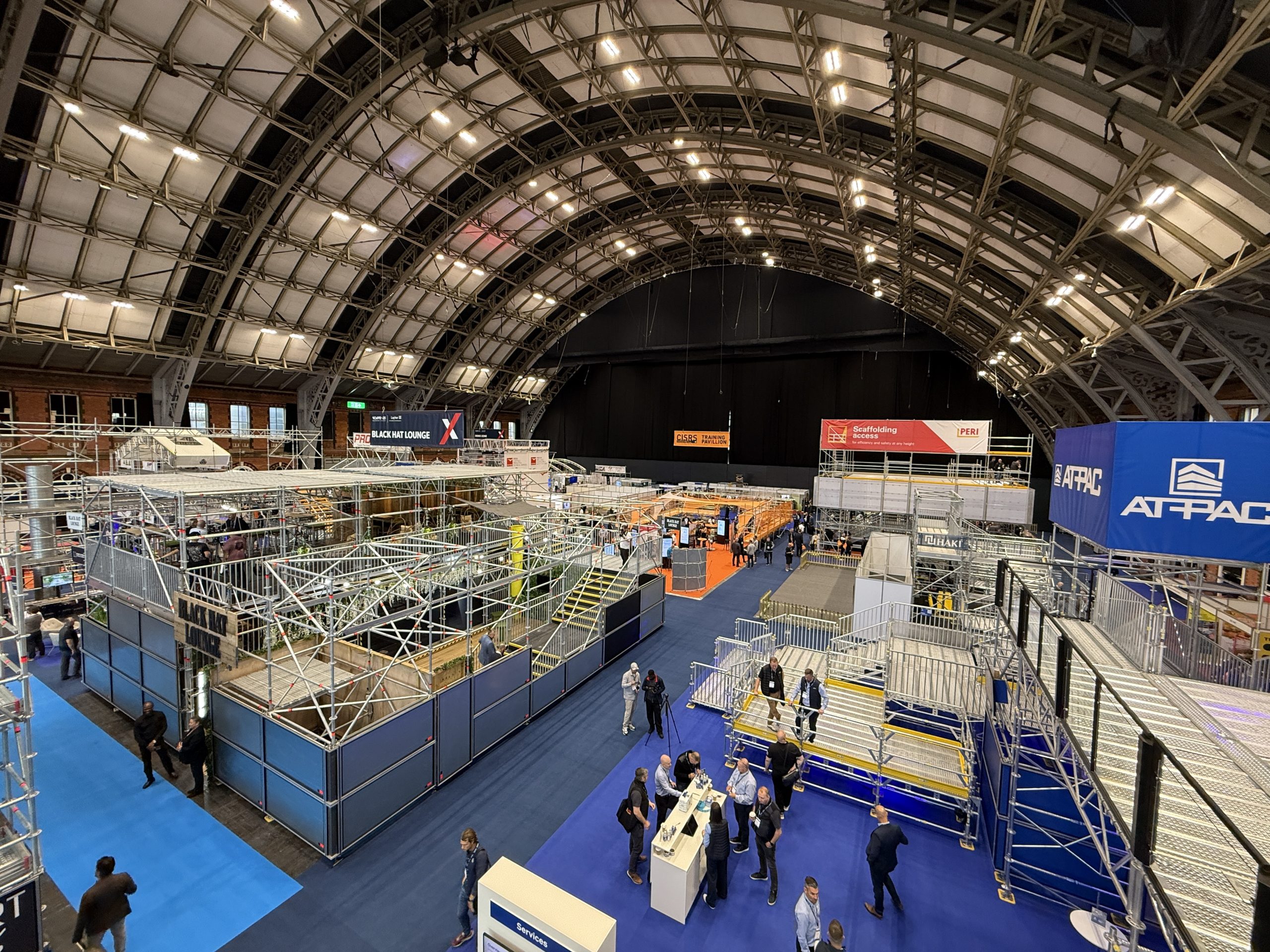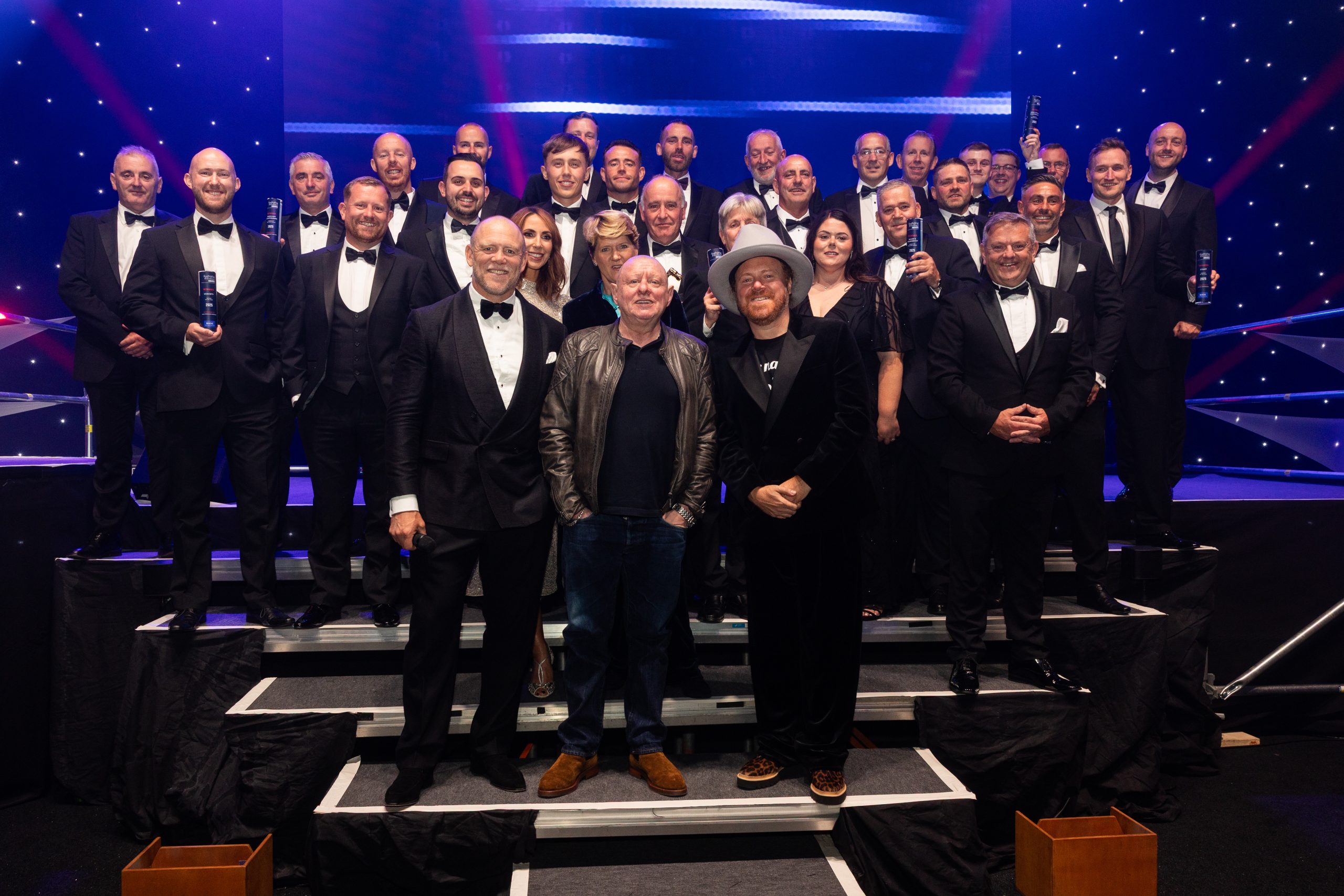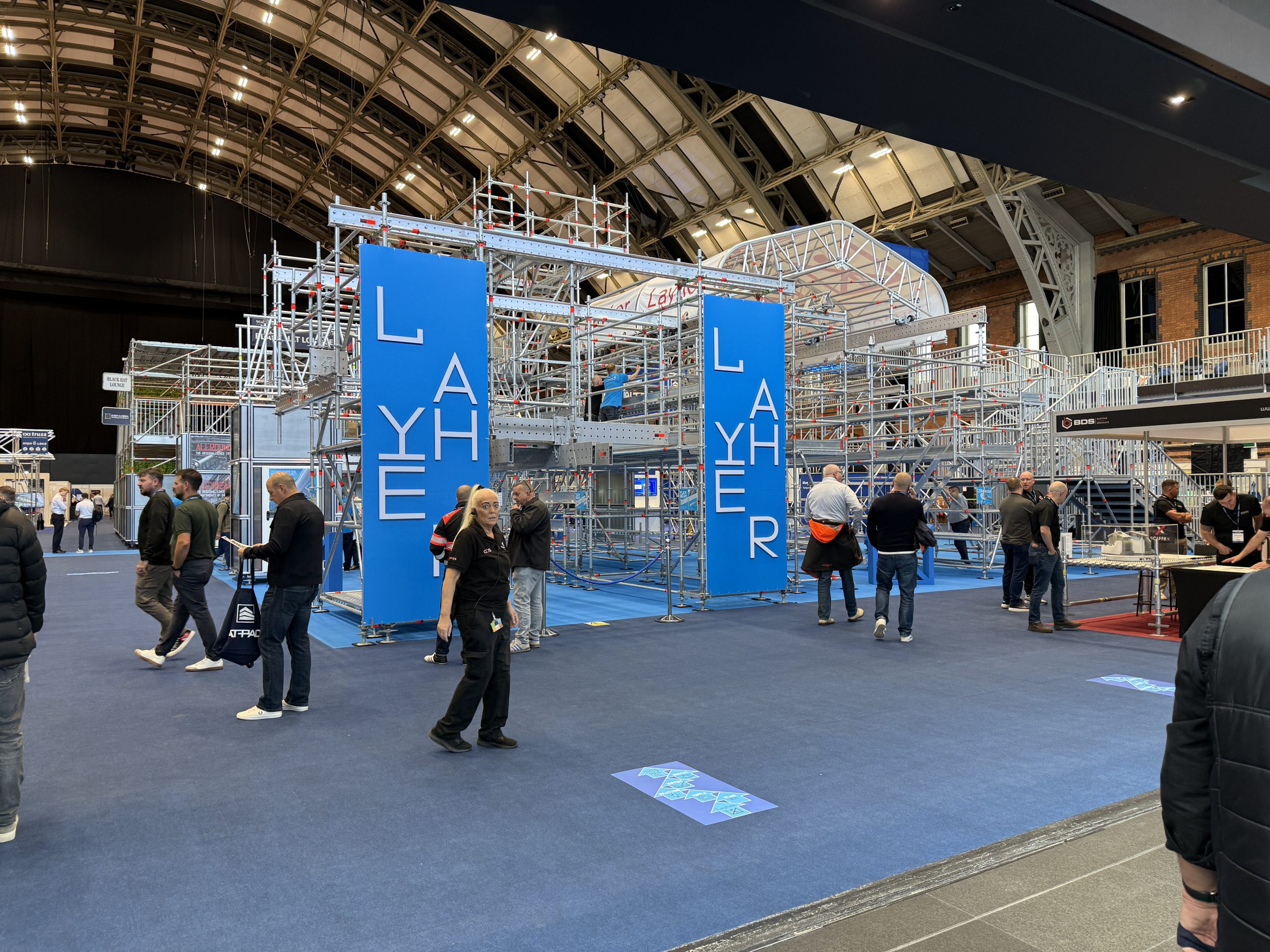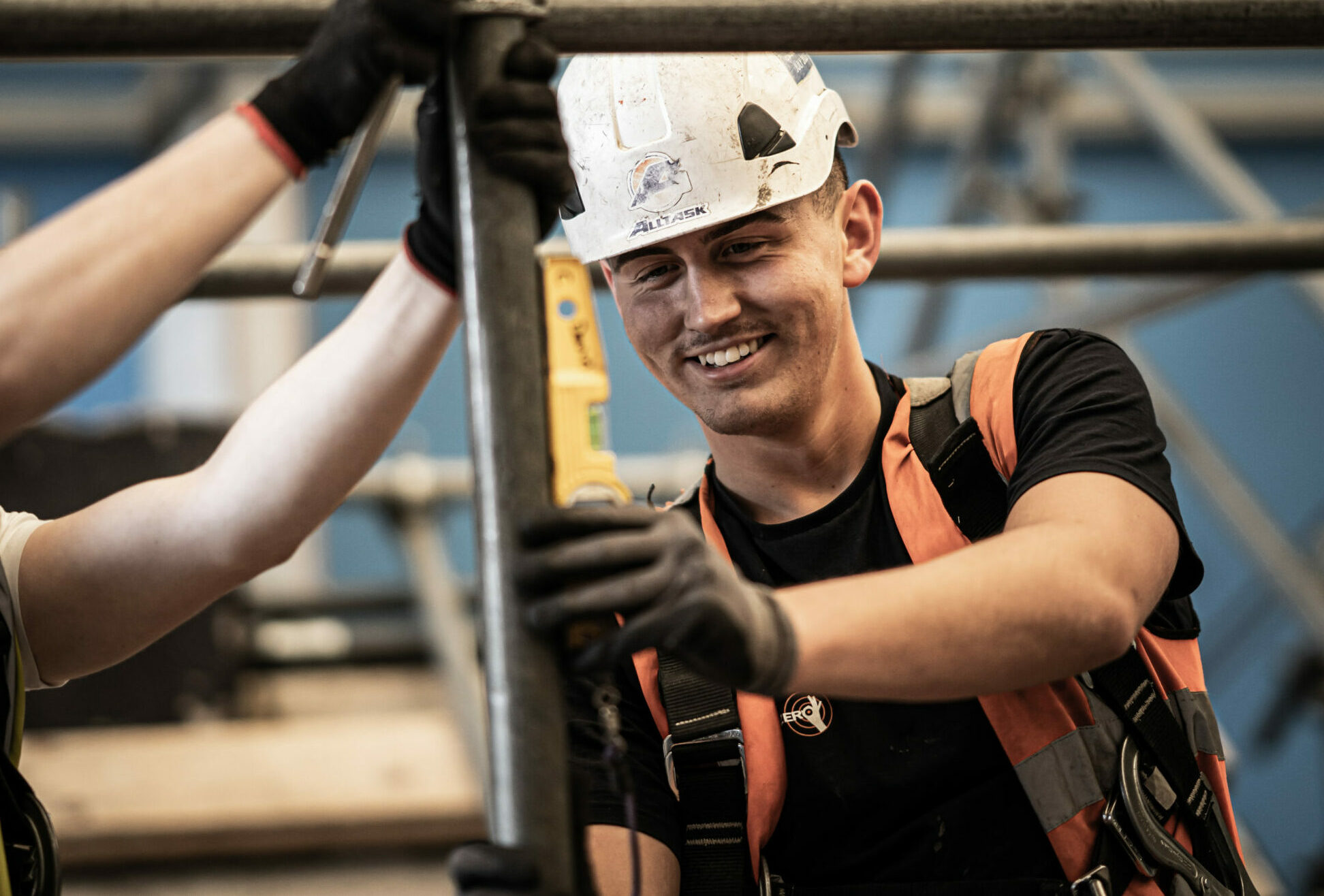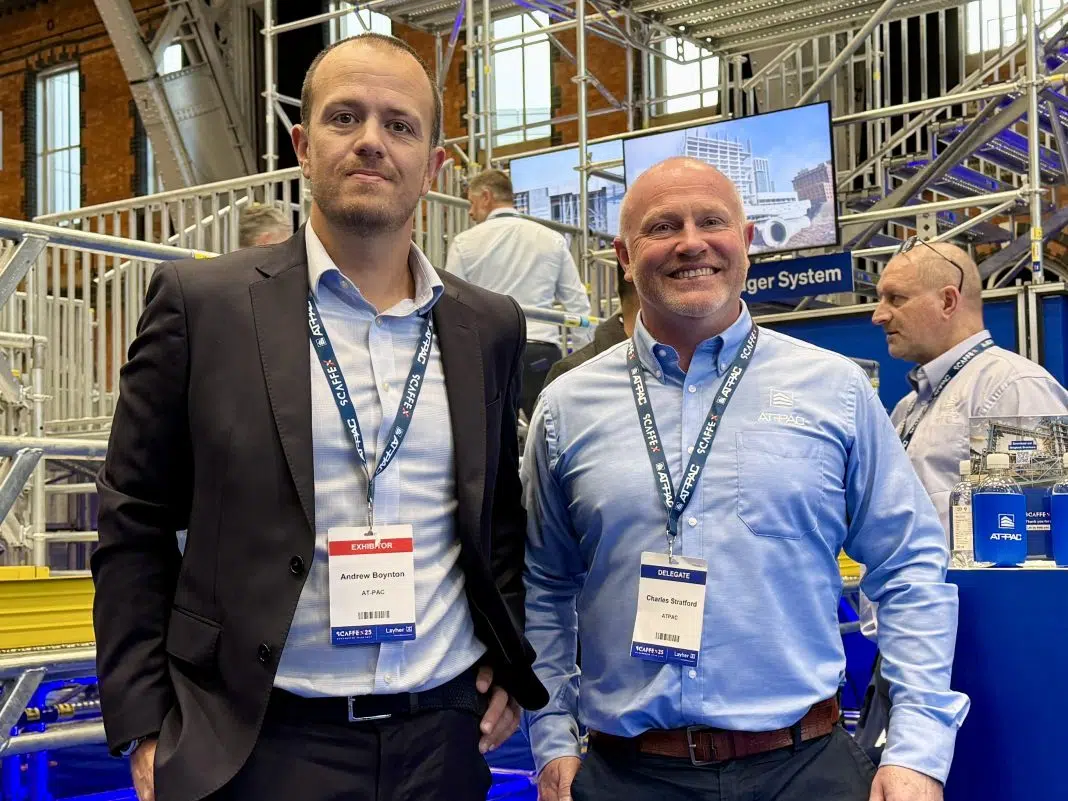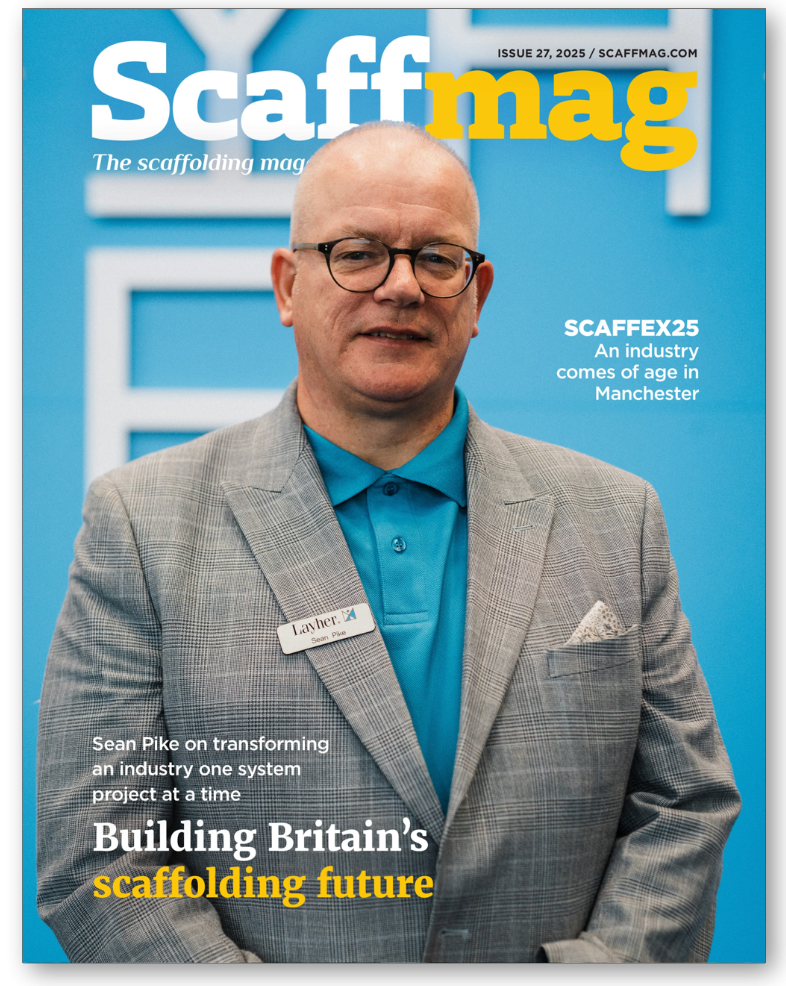Two days in September that showcased not just where scaffolding is heading, but how far it has already come
The doors opened at Manchester Central on Thursday morning, and within minutes, you could feel it. This wasn’t just another trade show. ScaffEx25 had that unmistakable energy of an industry hitting its stride, confident, collaborative, and ready to show the world what modern scaffolding looks like.
Fifteen times larger than last year’s Belfast event, this wasn’t simply about scale. It was about maturity. Where Belfast proved the concept, Manchester delivered the substance. The scaffolding and access sector had found its voice, and it was speaking with unprecedented unity.
A Community Finds Its Stage
Walking the floor over two days, the most striking element wasn’t any single product or announcement; it was the atmosphere. Contractors, suppliers, trainers, and designers weren’t just attending; they were collaborating in real time. Conversations started at exhibition stands and continued over coffee, dinner, and late-night drinks across Manchester.
“There’s been a real buzz,” one North West contractor told me on Friday. “You don’t often get everyone together like this.” That sentiment echoed throughout the event. After years of fragmented gatherings and regional meetings, the industry had finally created its own dedicated arena.
The venue choice proved inspired. Manchester Central’s vast single-span hall kept everything flowing, while the city itself, built on industry, rebuilt through determination, felt like the perfect mirror for scaffolding’s own evolution.
Step outside and you’re minutes from hotels, restaurants, and pubs where the real business gets done.
Innovation Made Real
The Demo Zone delivered on its promise to showcase genuine innovation rather than static displays. According to the organisers, all slots were snapped up within hours of becoming available, and the quality of demonstrations showed why.
Layher’s SIM2FIELD system brought augmented reality to scaffold planning, overlaying 3D models onto real-world environments with full material lists and weights visible on tablets. Staht’s digital pull tester turned traditional tie tests into instant data that managers could act on immediately. These weren’t concept pieces; they were working solutions addressing daily operational challenges.
Meanwhile, G-DECK demonstrated its trestle systems with full erections, which emphasised speed and compliance. Leach’s BIGBEN SuperHoard showed how recyclable PVC can eliminate timber waste and carpentry dependencies. ScaffCycle presented their vision of a circular economy made practical through digital marketplaces for used equipment.
But perhaps the most memorable moment came courtesy of Paul Corfield’s extraordinary collection of scaffolding memorabilia. Seeing decades of industry history displayed alongside cutting-edge technology created a powerful visual narrative. This sector knows where it came from and isn’t afraid to show where it’s heading.
Training Takes Centre Stage
The decision to position the CISRS Training Pavilion and Careers Hub at the heart of the exhibition rather than tucking them away in side rooms transformed the event’s dynamic.
Training providers compared methodologies while employers discussed what actually works on-site. The message was clear: skills development isn’t a sidebar, it’s the foundation everything else builds on.
The Careers Hub offered visitors VR headsets for safe “at height” experiences alongside NASC’s legendary Talent Packs. For an industry wrestling with recruitment challenges, having these career development tools prominently positioned rather than hidden away felt both necessary and overdue.
The Training Pavilion mapped clear progression routes from Part 1 through to Advanced qualifications, with CISRS centres invited to showcase their work, although some well-known centres were absent. Watching experienced scaffolders discuss training approaches with newcomers considering the trade, the sector’s commitment to bringing people in and bringing them through was evident.
Global Ambitions
The launch of the International Access and Scaffolding Association (IASA) on day one marked a genuinely historic moment. Bringing together leading trade associations from the UK, Japan, New Zealand, Malaysia, Australia, the United States and Canada, IASA represents the first time the global scaffolding industry has united under a single banner.
Wayne Connolly, IASA Chair, captured the significance: “For the first time, the world’s leading scaffolding and access associations are working together with a united purpose: to champion our sector, elevate standards, and secure its rightful recognition as critical to the success of projects everywhere.”
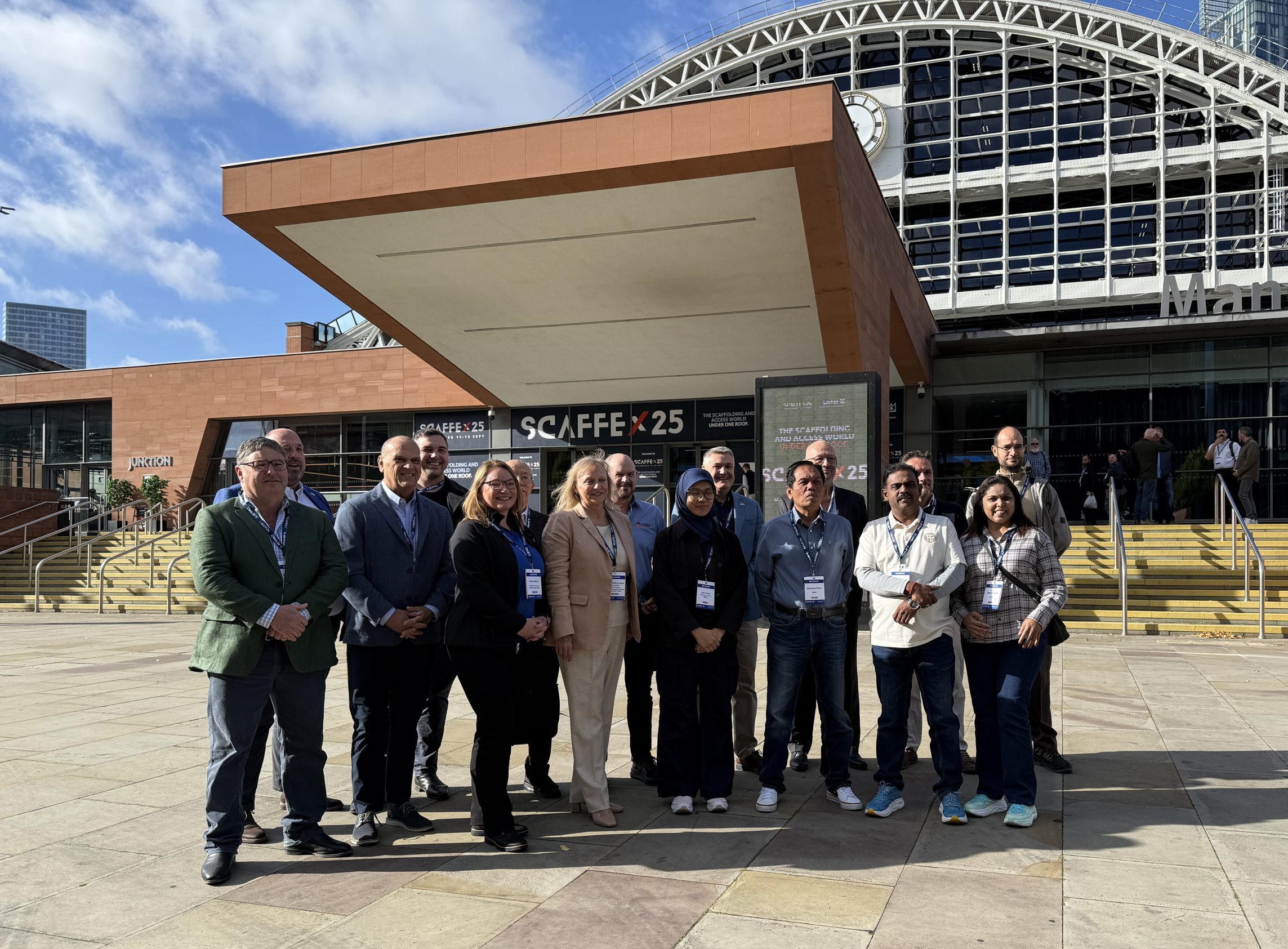
That BBC Breakfast chose to broadcast live from the show floor highlighted how effectively this message is cutting through. The conference sessions were hosted by ITV News presenter Nina Hossain and BBC News presenter Sophie Long, demonstrating the calibre of media attention the event now commands. National media focus on skills, economic impact, and scaffolding’s role in construction delivery signals momentum that extends well beyond the sector itself.
Excellence Recognised
Friday evening’s Scaffolding Excellence Awards provided a fitting finale to an exceptional week. With television presenters Alex Jones and Clare Balding hosting, joined by Leigh Francis, Mike Tindall and Shaun Ryder, the ceremony felt genuinely celebratory rather than merely ceremonial.
The night belonged to Allen & Foxworthy, whose work on the Blenheim Palace Roof Restoration earned both Design of the Year and Project of the Year – Large. Judges described the scheme as the “project of a lifetime,” praising its “innovation, creativity and problem-solving on a job that demanded genuine out-of-the-box thinking.”
Rob West of Benchmark Scaffolding received the Lifetime Achievement Award to widespread acclaim. His recognition for raising industry standards, strengthening safety culture and mentoring across commercial, rail, infrastructure and heritage sectors reflected an influence that has genuinely shaped industry thinking.
Other winners included Rhys Bennett of JMAC (Apprentice of the Year), Staht (Product of the Year), and Leach’s (Service of the Year)—each representing different aspects of an industry investing in its future.
Clive Dickin, Group Chief Executive of NASC and CISRS, summed up the evening’s spirit: “It’s a great opportunity for the industry to get together and celebrate the achievements of the brilliant people in the industry. The winning projects are remarkable examples of what this industry can and does achieve every day.”
What Manchester Proved
ScaffEx25 demonstrated something that many sectors struggle to achieve: genuine collaboration between competitors, meaningful investment in training and careers, and clear leadership on standards and innovation. The Black Hat Lounge provided an invitation-only networking space for industry leaders, while the main exhibition floor remained accessible to anyone wanting to learn, connect, or contribute.
The exhibitor list told its own story of sector confidence, from established names like Layher, PERI, and HAKI to innovative software providers like Avontus and SMART Scaffolder, from training bodies CISRS and CITB to charitable organisations like Lighthouse and RISE, every aspect of the scaffolding ecosystem was represented.
One young scaffolder captured the mood perfectly: “It’s inspiring to see the tech and training in one place.” An exhibitor told me they’d been “flat out since the doors opened.” These weren’t polite pleasantries; they reflected an event that delivered substance alongside spectacle.
The View Forward
ScaffEx25 marked more than impressive attendance figures or exhibition square footage. It showcased an industry that has found its confidence while remaining grounded in practical problem-solving. From global collaboration initiatives to VR training experiences, from digital workflow management to heritage restoration expertise, the solutions on display addressed real operational challenges.
Having covered this sector for years, Manchester felt different. This wasn’t just another date in the calendar; it was confirmation that ScaffEx has become the dedicated stage our trade has needed for years. The trajectory from Belfast to Manchester suggests next year’s event will be something exceptional.
Yes, there’s room for evolution. But the foundation is now solid. ScaffEx25 has established momentum. The scaffolding and access industry left Manchester with more than business cards and brochures. They left with practical solutions, global connections, clearer career pathways and renewed confidence in where the sector is heading.
Not a bad result for two days in September. The future of scaffolding looks increasingly bright and increasingly unified.
This article was originally published in Issue 27 of the ScaffMag magazine.

